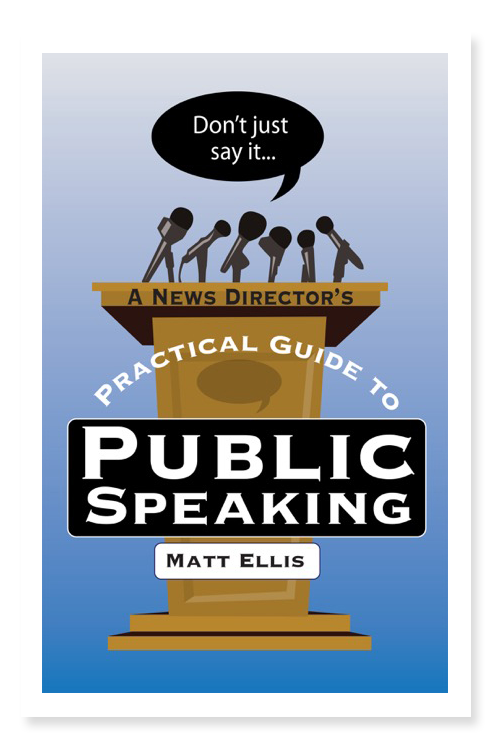Public Speaking Tips: 3 Don’ts Every Public Speaker Needs to Know

Public speaking comes naturally to some, but, given the choice, most people would rather have a root canal than get up in front of a group of people and talk. Even the smartest (and bravest) people can have trouble crafting a message and delivering it to an audience. There’s something about public speaking that gets our blood pressure rising.
Former newsman Matt Ellis knows the secrets to successful public speaking. His new book, “Don’t Just Say It… A News Director’s Guide to Public Speaking,” offers a direct and simplified approach to ditching the nerves and producing a high-energy, memorable speech or presentation.
Written for both CEOs and college students, this short paperback is a must-have for anyone who wants to perform like a pro behind the podium.
As Matt points out, there are certain things all speakers should – and should not do. When it comes to public speaking tips, here are the 3 Don’ts Every Public Speaker Needs to Know from the pages of the book:
1. DON’T: Treat your PowerPoint as the most crucial part of your presentation
Hey, we all love a good slide deck – especially when we create it ourselves, but audiences don’t show up just to see slides. They want to hear what you have to say and understand why you are saying it. A slick PowerPoint presentation, chock full of charts and graphs, is meant to complement what you say—not be exactly what you say. The biggest mistake presenters make is to stand there and read their slides. The audience doesn’t need you for that. They can read. They are counting on you to provide the meaning and the context for what they see on the screen. If all you’re doing is reading to them, you might as well stay home.
2. DON’T: Focus on facts and data to make your point
Facts are fine, but everyone loves a good story. Think about how your experiences led you to your presentation: What did you learn? What surprised you? What would you do differently next time? Now, think about how those experiences connect back to your primary themes. You can tell a short story that helps the audience understand why they should care about your presentation and how they should feel when it’s over.
Stories allow you to present facts with some emotion, and that’s a powerful one-two punch.
3. DON’T: Just say it once
Experts say most of us need to hear something 7 times before we learn it. That’s right – 7 times. Once you have clearly identified your themes – and the most important take-a-ways – be sure you tell them to your audience. And then tell them again. And again. Of course, you can vary your tone and word selection, but repetition is the key to comprehension.
 Want more public speaking tips and straightforward pointers to improve your public speaking? Click here to purchase a copy of “Don’t Just Say It… A News Director’s Guide to Public Speaking,” and you’ll be on your way to enjoying your time behind that podium.
Want more public speaking tips and straightforward pointers to improve your public speaking? Click here to purchase a copy of “Don’t Just Say It… A News Director’s Guide to Public Speaking,” and you’ll be on your way to enjoying your time behind that podium.


